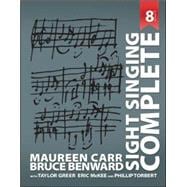New to this edition is an integrated approach to rhythm and performance — This edition is unusual in that we not only expect student to master each skill by itself, we also expect them to integrate all three skills in carefully designed sequence of “Play + Sing” exercises adapted from 18th – 21st century instrumental and vocal repertoire.








